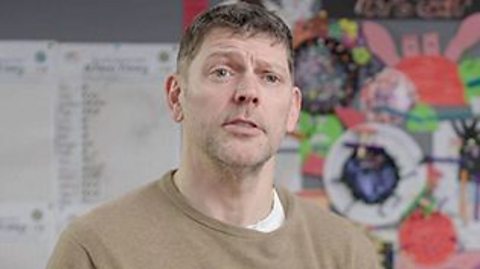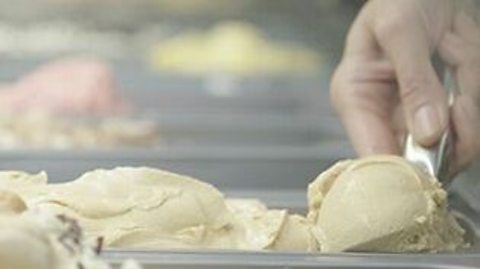Key points
- A balanced diet contains the correct amount of all food groups.
- The food groups are: carbohydrates, lipids, proteins, vitamins, minerals, dietary fibre and water.
- Each food group has its own role to play within a healthy diet.
A healthy plate
Video
Find out what makes a balanced plate of food from a catering supervisor.
My name is Tracy Healey and I am the Catering Supervisor at Ravensthorpe Junior School.
We try to get the children to eat a balanced diet. Obviously, it helps them getting all the nutrients they need on a daily basis.
Healthy diet, to me, is a balance of what we call an eat well plate. There's your carbohydrates, which is your breads, your starches, rice, potatoes, etcetera. You've got your oils, which is obviously fats. You've got your proteins, which is your meats, your pulses, beans. And then you've got your fruit and vegetables.
We do try and incorporate a lot of fruit and vegetables into our meals. If you think about homemade pizza, which you would traditionally think as being healthy, the pizza bases actually have grated carrot and courgette in there, then there's the homemade tomato sauce, which has the tomatoes, peppers, onions, carrots, and then, obviously, on top of the pizza, we put sweetcorn and peppers.
And they come back and say "Miss! Miss! I've really enjoyed that. Can we have that again?"
That, to me, you know, puts a smile on my face.
Can you answer these questions based on the video?
What are the four food groups mentioned in the video, which together help to create a 'healthy plate'?
The four food groups mentioned in the video that together help to create a 'healthy plate' are:
- Carbohydrates
- Fats
- Proteins
- Fibre
Can you think of an example of food from each of these groups?
Balanced diet
To keep healthy, it is vital to eat a balanced diet. This means eating the right amount from different food groups. Too much may cause obesity and too little may cause malnutrition.
The World Health Organisation recommends getting at least half of your energy intake from carbohydrates and no more than 30% from fats. The organisation also recommends 400 grams of fruit and vegetables daily.
Nutrients
Nutrients are essential substances that the body needs. There are different types of nutrient, each with its own purpose:
Carbohydrates provide energy. They are found in bread, potatoes, rice and pasta.
Lipids (fats and oils) provide energy. Lipid-rich foods include butter and chips.
Proteins provide materials to make new cells and to repair damaged tissues, such as muscles. Beans, eggs, fish, meat and milk are high in protein.
Vitamins are vital in many processes. For example, vitamin K helps blood to clot and vitamin C prevents illness. Fruit and vegetables are vitamin-rich.
There are 16 essential minerals. These include iron, used to transport oxygen in the blood, and calcium, used in making bones and teeth.
Fibre
Fibre is not a nutrient. It cannot be absorbed by the body and contains no calories or vitamins, however it is necessary for a balanced and healthy diet.
Fibre adds bulk to food, and helps it to pass through the digestive system. Fibre also prevents constipation and heart disease.
Fruit, vegetables and wholegrain cereals are high in fibre.
Water
Around 70% of human body mass is water. Chemical reactions in cells take place in water and the blood transports substances dissolved in water.
Drinking water frequently replaces the water lost in urine, sweat and breathing out.
Test your knowledge
Quiz - Nutrition
Find the food group
Teaching resources
Need more resources to help take your students' learning to the next level? In this short video from the Biology with Dr. Chris van Tulleken series, Dr. Tulleken introduces a clip of Jem Stansfield explaining exactly what a calorie is and how it relates to different forms of energy.
Â鶹ԼĹÄ Teach has thousands of free, curriculum-linked resources to help deliver lessons - all arranged by subject and age group.
Play the Atomic Labs game! gamePlay the Atomic Labs game!
Try out practical experiments in this KS3 science game.

More on Nutrition, digestion and excretion
Find out more by working through a topic
- count5 of 15

- count6 of 15

- count7 of 15

- count8 of 15
